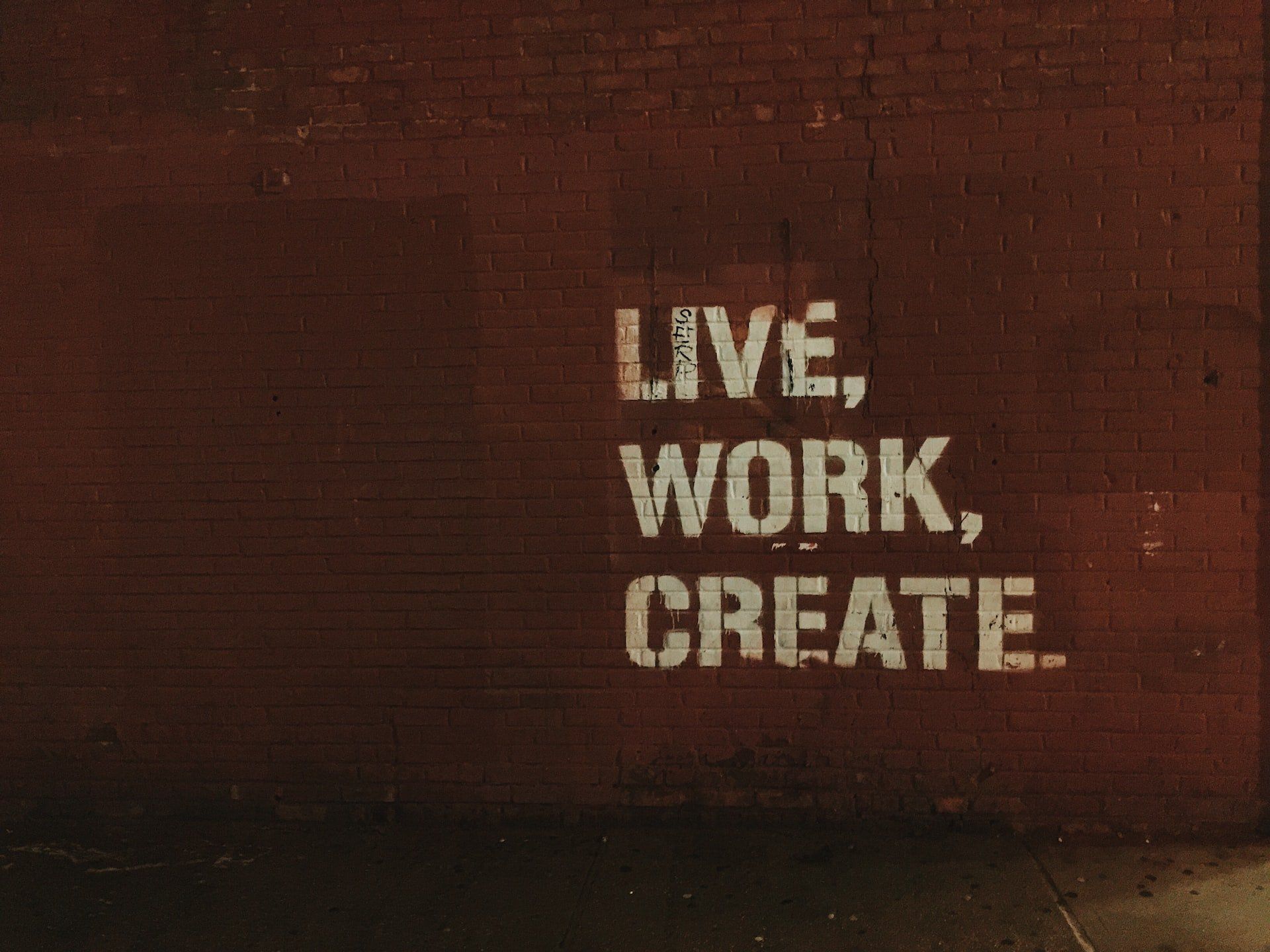Customer Discovery | The In-depth Guide
The customer discovery process is a crucial element for any business, particularly for those in the early stages of development. It serves as the foundation for understanding who your target customers are, identifying the specific problems they face, and exploring how they currently attempt to solve these issues. By challenging core business assumptions, customer discovery paves the way for developing new or enhancing existing products that truly address market needs.
A significant reason why early-stage companies fail is their inability to identify a problem worth solving or a sufficiently large market. Research indicates that many new businesses falter due to a lack of market demand. Engaging in customer discovery can drastically reduce the risk of startup failure by ensuring that your product or service is aligned with genuine customer needs.
In this article, we will dive into the What, the Why and the How of Customer Discovery.
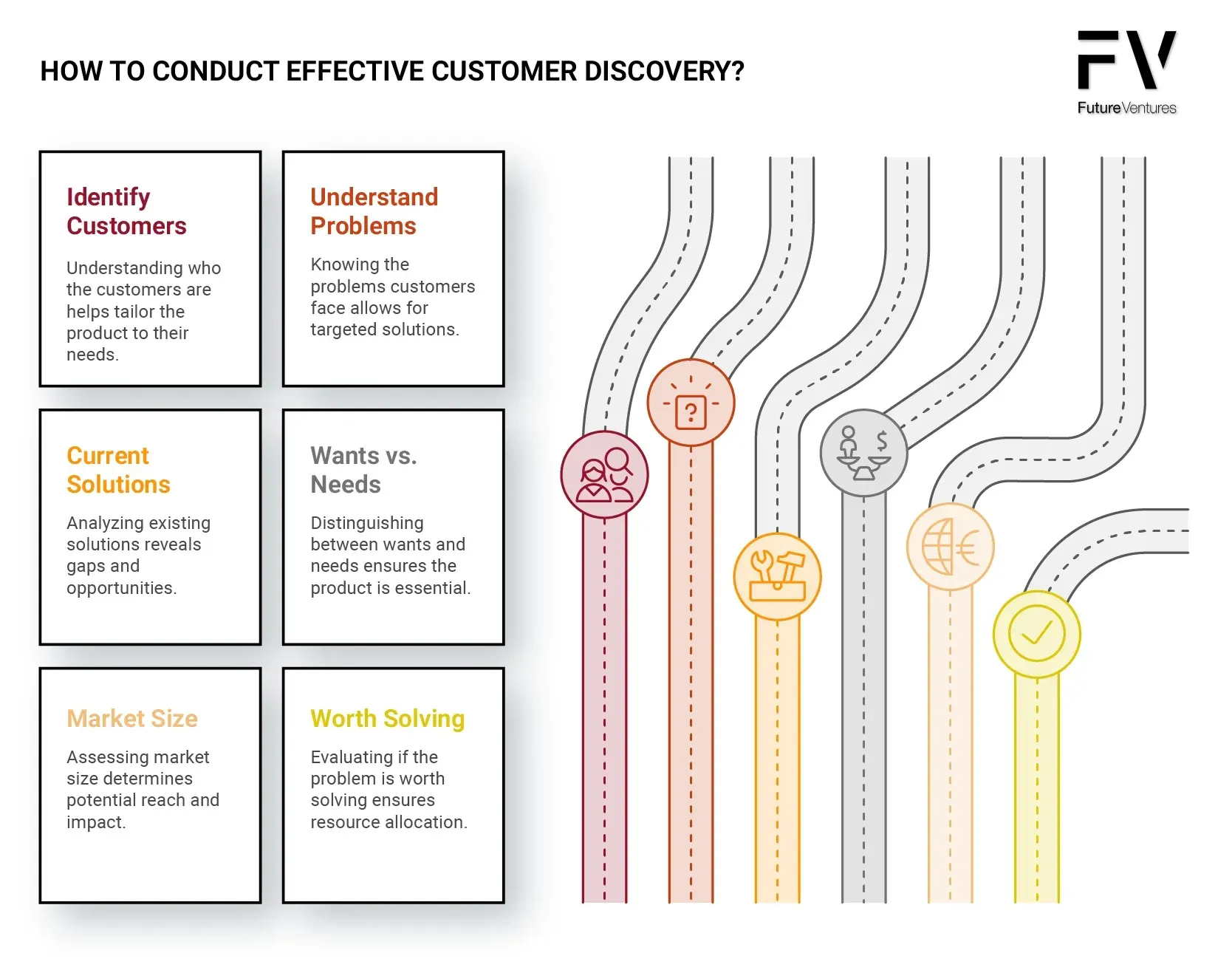
What is Customer Discovery?
Customer discovery is the initial process of understanding the customer’s situation, needs and problems. This process involves both defining and prioritizing those needs and problems, and can be applied to both early-stage companies and those seeking to develop new products, expand their range of customers or enter new markets. Validating a business idea through customer discovery is important for identifying real market needs and ensuring the product or service is relevant. The Lean Startup methodology emphasizes the importance of using customers very early in the business development process.
Techniques such as interviews, ethnography or journey mapping are used in the customer discovery approach.
All companies, from start-ups to those seeking to expand into other markets or broaden their customer base, should diligently undertake customer discovery. It underpins the company's success. Customer discovery is an ongoing process that should be integrated into a startup’s culture to adapt to customer needs and market changes continuously. Continuous feedback from customers is crucial for adapting and refining the product throughout the development process.
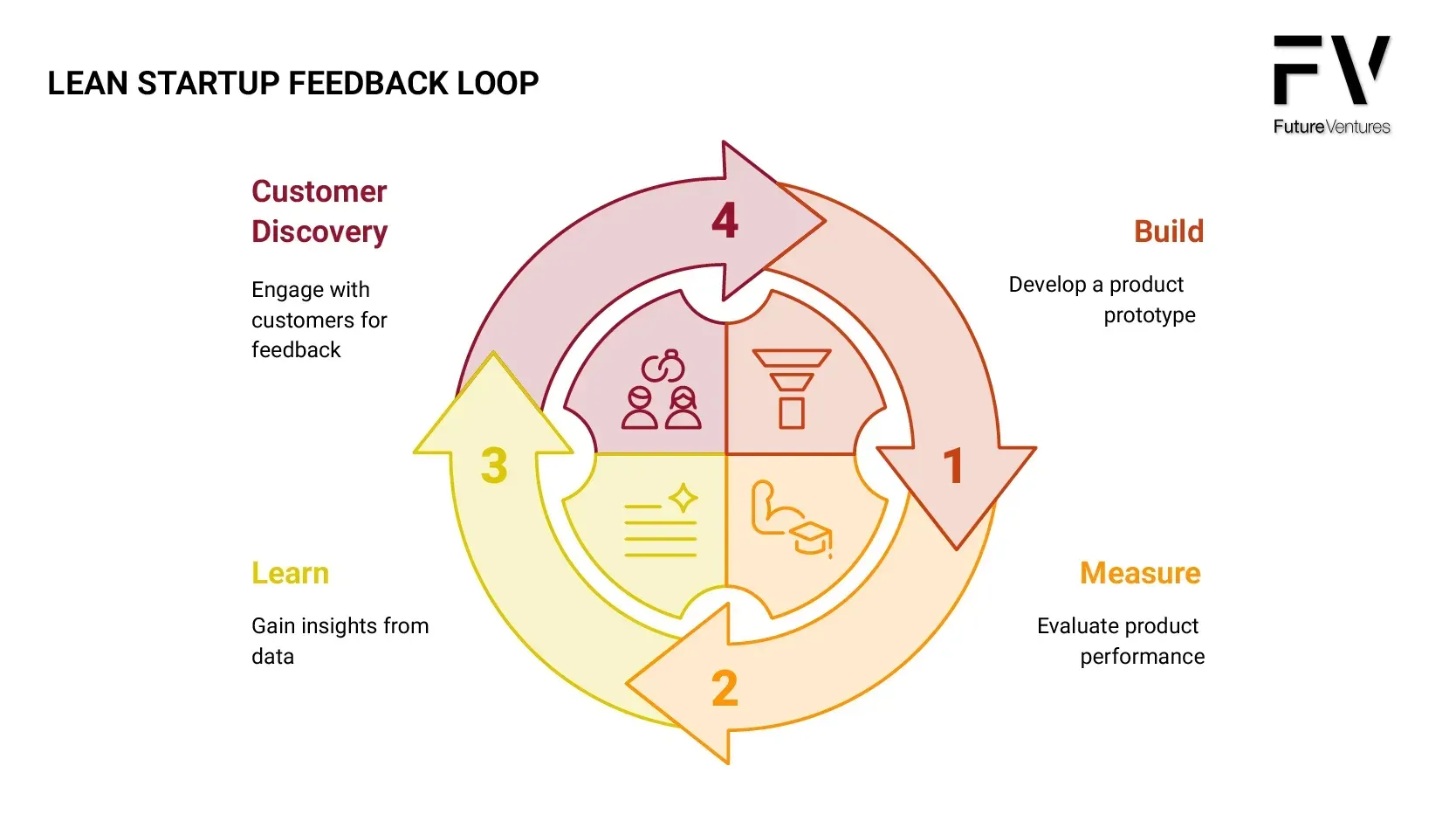
Why should you do Customer Discovery?
Customer Discovery provides you with really valuable insights about your customers, their needs, and how you could potentially address those needs. Analyzing customer data is crucial in this process to gather actionable insights. It is imperative that you undertake Customer Discovery fully before proceeding to build a product or service. Customer Discovery will help you to answer certain key questions, such as: The customer discovery journey should initially focus on the problem space before developing a solution, ensuring that the foundation of the product is built on real customer challenges.
- Who are your prospective customers?
- What problems are they facing?
- How do they go about solving these problems?
- What do they need vs. what do they want?
- How big is the market?
- Is this an opportunity worth pursuing?
Benefits of Customer Discovery
Customer discovery is a crucial process for startups to test and validate their business ideas. The benefits of customer discovery include:
- Reduced Risk of Failure: By understanding the target market and customer needs, startups can significantly reduce the risk of failure. This process ensures that the product or service being developed aligns with real market demands, increasing the chances of success.
- Improved Product-Market Fit: Customer discovery enables startups to create products and services that effectively meet the needs of their target market. By addressing the specific pain points of potential customers, startups can achieve a better product-market fit, a crucial factor for long-term success.
- Increased Customer Satisfaction: Understanding customer pain points and needs allows startups to create products and services that meet customer expectations. This leads to higher customer satisfaction, as the solutions provided are tailored to their specific problems.
- Competitive Advantage: Startups that conduct thorough customer discovery can gain a competitive edge. By thoroughly understanding their target market, they can create unique value propositions that differentiate them from competitors.
- Improved Business Model: Customer discovery can help startups refine their business model. By gathering valuable insights from potential customers, startups can adjust their strategies to create a more sustainable and scalable business.
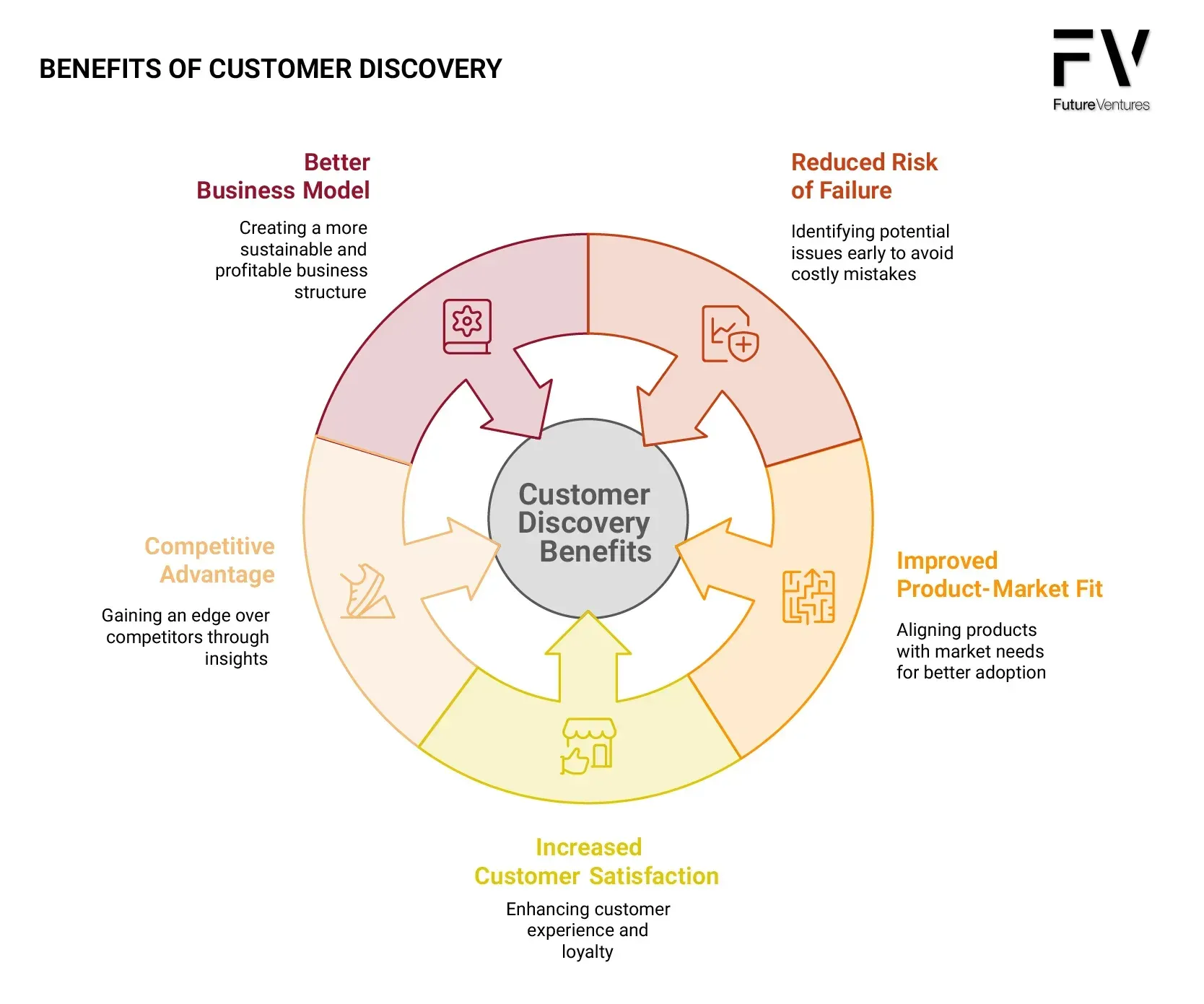
How to do Customer Discovery?
To carry out this process, you must conduct customer discovery interviews and execute the following 7 steps:
- Define the Hypothesis
- Identify a User Persona
- Validate the Hypothesis
- Gate Check
- Validate product idea to MVP
- Gate Check
- MVP to Scale
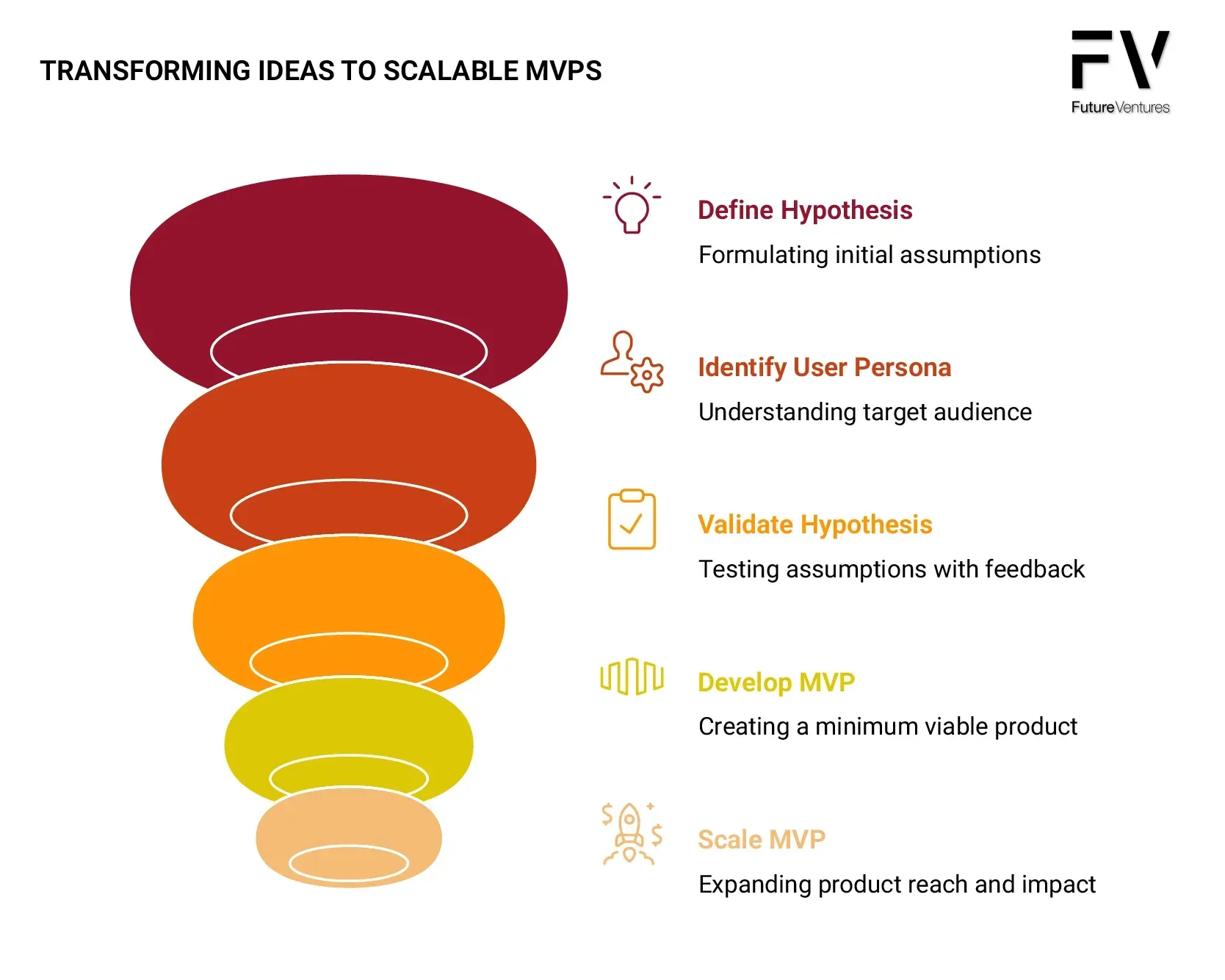
These steps align with the four critical phases of the customer discovery process: defining a hypothesis, testing the hypothesis, testing the product concept, and validating the product concept. The Lean Startup methodology encourages validating business assumptions to reduce risks in product development.
Each one of them will help you to obtain a final product or service that is more likely to be successful since it will be focused on the real needs of your customers.
Step 1: Define the Hypothesis (i.e. Your Core Business Assumptions)
Answer the following questions when documenting your hypothesis!
- What is the problem to be addressed?
- Why? Why? Why? Why? Why? → leads to the “So What”
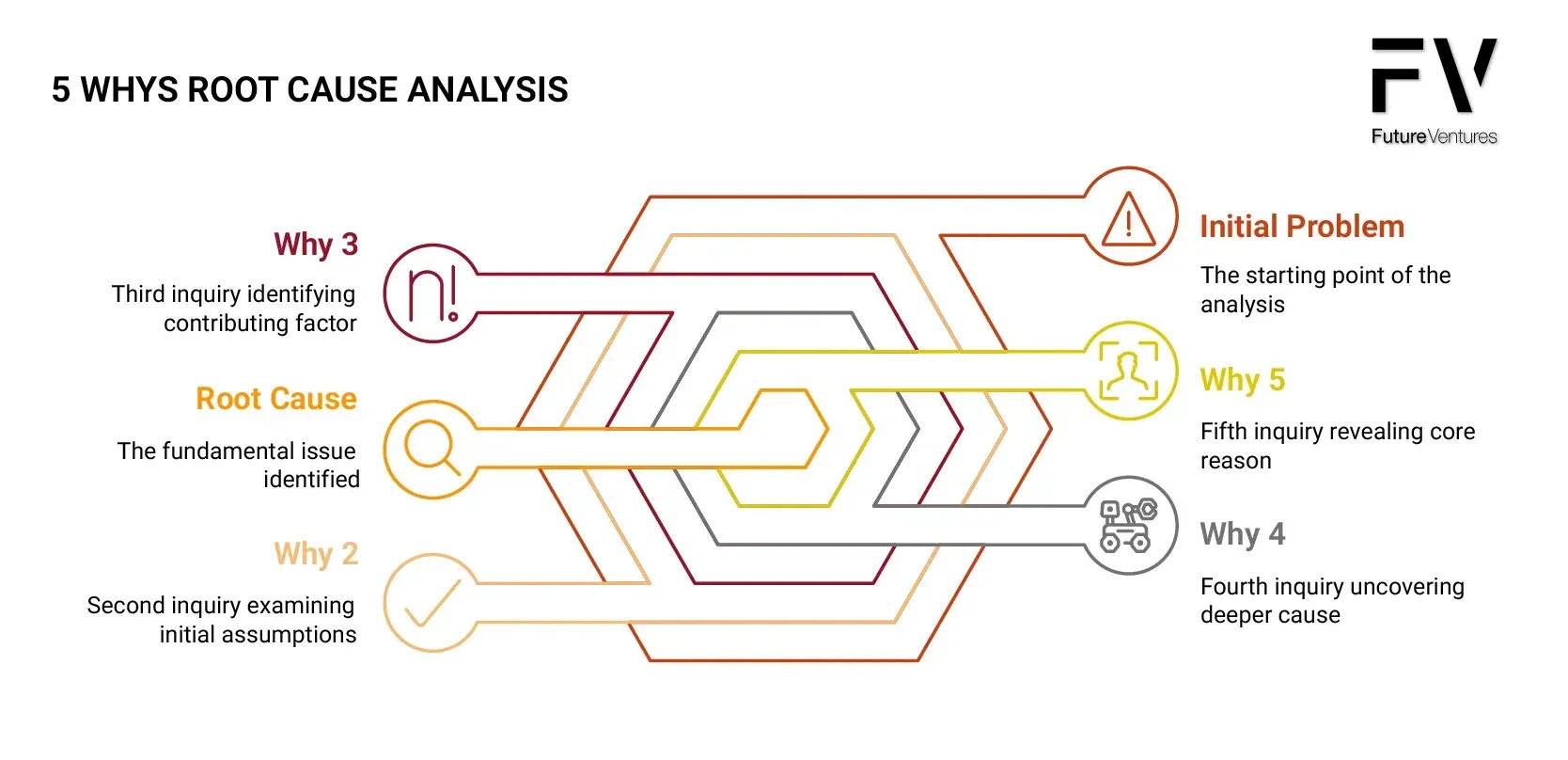
- Where?
- When?
- How?
- What is the buying process?
- What is the buying imperative?
- What are buying/adoption barriers?
- How big of a pain is the status quo, the current way of doing it?
- Who are we competing against?
- Why us?
Using discovery questions can help accurately identify the root cause of the problem.
An effective methodology to help you to identify and analyze a problem is to use either the 5 Whys or the Fishbone Diagram. By continuously asking why something is a problem, you can accurately identify the root cause of the problem. Only after truly understanding the root cause of a problem can you embark on designing a solution that addresses the said problem.
Example Hypothesis:
- (What) Producers require a third-party technology to [insert solution]
- (Why 1) so that they can meet the new regulatory requirements for ABC (Why 2) without being compliant they will not be able to sell domestically or internationally their products (Why 3) their packaging will not meet the minimum disclosures required for their products (Why 4) labels are missing regulatory disclosures (Why 5) … (Note: not in all cases you will use all 5 Whys. In some cases you will stop short.)
- (Where) in Europe
- (When) starting on January 1, 2023
- (How) by being able to … so that they can …
- (What is the buying imperative?) Due to the new regulations, all producers will require this solution.
- (What are the available alternatives?) i) stop selling internationally and apply a physical label that meets the requirements; or ii) secure a technology solution.
- (How big of a pain is it?) Each Producer will be willing to pay us $30/month to provide them with that solution.
- (Who are we competing against?) We are competing against DEF and GHI solutions that are …
- (Why us?):
- Reason 1
- Reason 2
- Reason 3
- …
Refer to our Customer Discovery Hypothesis Template

Step 2: Identify a User Persona
The next step is to identify a persona that represents the target customer.

Objective
Define a Persona (i.e. a Target Customer) as narrowly as possible.
What is a User Persona?
A persona is a fictional character that you define based on your research. The persona represents a specific user type that might use your product/service/feature to address the problem as stated above. The persona should be defined as narrowly as possible and attach as many characteristics to it as possible. Creating a persona will help you to empathize with and recruit a user who exhibits the said characteristics so that you can better understand their needs, experiences, behaviors, and goals, thereby identifying distinct customer segments. Creating a customer persona can aid in testing hypotheses by focusing assumptions and ensuring targeted research.
In order to identify a persona, you should answer the following questions:
- Who are the people/companies that have the problem that we should investigate/research?
- What are the problems that we think they have?
- What are the possible solutions that we think would help them solve it?
- What are the common characteristics amongst these users/companies?
- Where are they located?
You will need to identify and create many personas in order to validate the hypothesis. What is important to note is that the hypotheses should be individually tested with each user persona in mind.
Super Tip: Grouping personas risks diluting the problem and, consequently, the solution. You cannot be everything to everyone. You should start narrow before you can go broad.
Step 3: Validate the Hypothesis
The third step is to validate the hypothesis by conducting customer discovery interviews. These interviews should be conducted with potential customers and should include open-ended questions that allow for in-depth discussion. The goal is to gather qualitative data that can either support or refute the initial hypothesis.
Objective
- Conduct research to (dis)prove a hypothesis or form a new hypothesis.
- Refine Product/Feature idea.
Persona
Leveraging a defined user persona:
- Recruit users/companies that match the characteristics of the user persona. The number of participants has to be statistically significant.
- Direct research to understand the prospective customers’ needs
- Interview prospective customers:
- Conduct customer interviews to gather qualitative data that can either support or refute the initial hypothesis.
- Ask them to describe the current process. Use open-ended questions like “Walk me through the steps…”, “What does a day-in-the-life look like?”, “If they could do it differently, what would they change?”, “How?” and “Why?”
- Explore past behaviors by asking, “Tell me about the last time that you…”
- Use the “5 Whys” to determine the root cause(s) of the problem your customer is facing.
- Practice the Mickey-Mouse principle. Two big ears and one small mouth. Listen at least 4 times as much as you talk.
- Focus on learning and understanding rather than pitching or selling. This is not the time.
- Do NOT use leading questions. Do NOT interview for sentiment. Do NOT accept answers without probing further.
- Creating a safe space during interviews encourages honest feedback from participants.
- Conduct competitive research to understand whether you can provide a competitive edge.
- Develop high-fidelity design/prototype of the solution
- Present high-fidelity design/prototype and gather feedback from the prospective customers
- Determine how much the people/companies are willing to pay you to provide that solution
- Determine how many prospective customers will need this solution. What is the size of the target market?
- Enlist commitments from prospective customers to convert to committed customers. To conduct effective customer discovery interviews, ask open-ended questions to gain deeper insights into customer needs and behaviors.
Measurements
Key measurements in this phase include:
- Competitive Research
- How many competitors exist?
- What problems are they trying to solve?
- What solutions (i.e. features) do they have to solve the problem?
- What differentiates your organization from the competition?
- Can you deliver a solution that drives significantly more value (e.g. at least twice as good) to overcome switching costs and resistance?
- Customer Research
- How many prospects have we talked to in total?
- How many of those prospects have shown interest?
- How many of those interested prospects have signed a Letter of Intent (LOI)?
- How many of those interested prospects have committed to a $ that they would pay us to solve that problem? (further defined as a committed customer)
Refer to our Customer Discovery Interviews Questions Template
Step 4: Gate Check
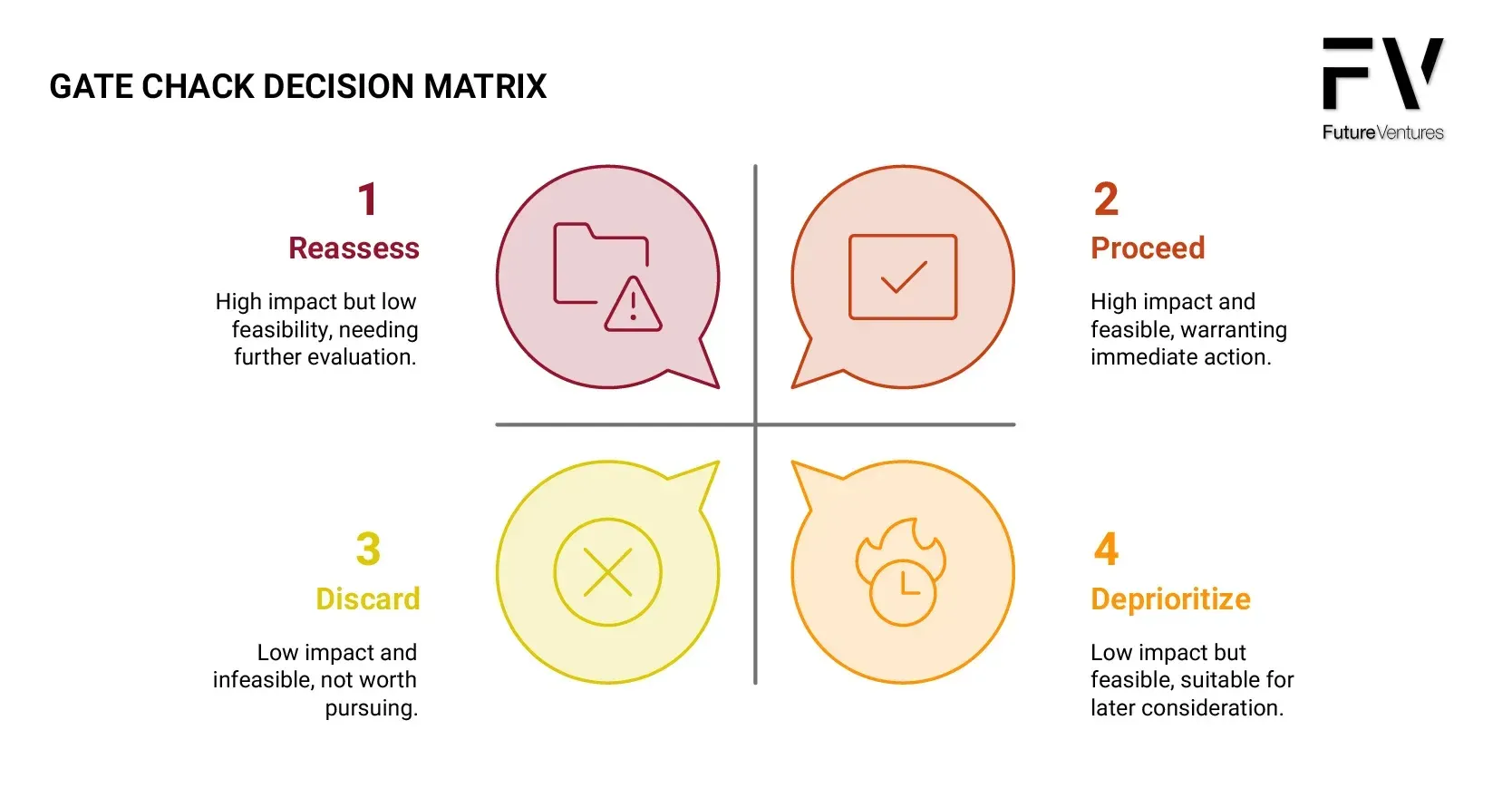
Objective
Make a Go/No-go decision as to whether to proceed to the next phase vis-à-vis other opportunities.
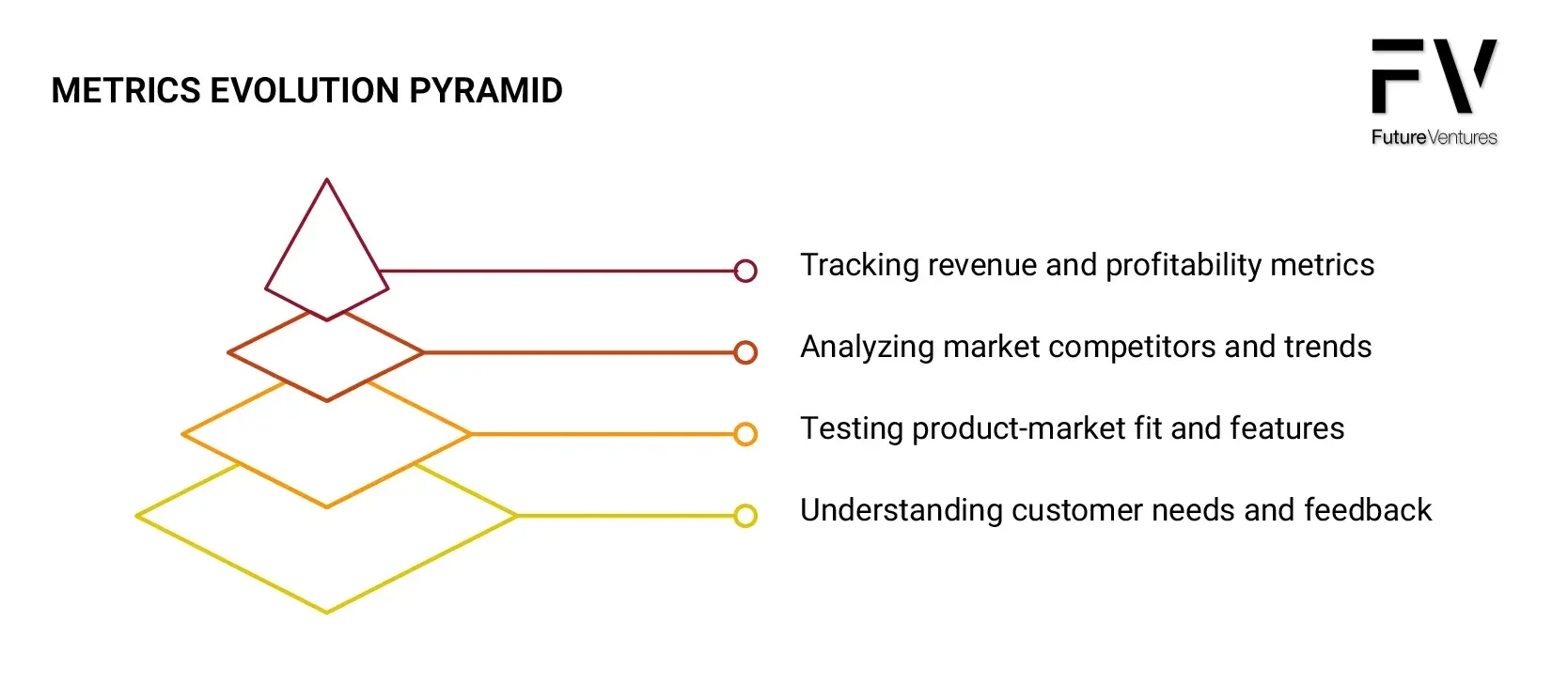
Key Factors to Consider
- Cost: Estimate the cost and time to develop and implement the solution.
- Schedule: Estimate the time to develop and the timing to align with customers’ rhythm of the business.
- SAM and SOM: Extrapolate Customer Research metrics to determine the Serviceable Available Market (SAM) and Serviceable Obtainable Market (SOM);
- LTV: What is the Life-Time Value (LTV) to be derived from this feature?;
- Moat: Does the feature strengthen the competitive positioning of the product? If so, how?;
- Revenue: Extrapolate Customer Research metrics to determine the Revenue associated with the SAM and SOM;
- Plan: Outline a plan for Phase 2 to understand Capital, Resource requirements and any Dependencies that impact the Cost/Scope/Schedule/Quality vectors.
- Focus Groups: Conduct focus groups to gather in-depth feedback from potential customers.
Outcomes
- ROI: Calculate the possible Return on Investment (ROI)
- Prioritization Matrix: Prioritize vis-à-vis other opportunities
- Decision Record: Create a DR, update Decision Log and Product Roadmap
Step 5: Validated Product Idea to Minimum Viable Product (MVP)
Objective
- Develop a minimum viable product per the design validated in Phase 1
- Evaluate whether the solution delivered the hypothesized value to the committed customers
Key Activities
Activities in this phase include:
- MVP: Transition from high-fidelity design/prototype 🡪 Develop and implement MVP
- Demos: Demonstrate the MVP during development and implementation to evaluate whether the design will deliver the intended value
- Usage: Evaluate customer usage after researching the features (i.e., are they using it?)
- Value: Evaluate whether the solution is providing the expected value (i.e. are they happy?)
- Research: Refine research conducted in Phase 1 to further our understanding of the market
- Story: Outline the messaging that resonates with your ideal customer profile
- Stratify and Segment: Identify prospects that fit your ideal customer profile
- Channels: Identify channels to access your ideal customers at scale
- Value Proposition: Refine the value proposition based on feedback obtained during customer discovery
Measurements
The key measurements in this phase can be broken into four groups:
Development of MVP:
- How are we tracking to budget?
- How are we tracking the schedule?
- How are we tracking on scope?
- What is the quality of the overall solution?
Product Research:
- How is the feature being used?
- What features are being used?
- What features are not being used?
Customer Research:
- How many committed customers fulfilled their obligations?
- How many committed customers that fulfilled their obligations gave a perfect testimonial?
- How many committed customers that fulfilled their obligations have begun using the system unassisted?
- How many committed customers that fulfilled their obligations required assistance and to what extent?
- Can you systemize the learning from the customer onboarding process?
Market Research
- How many prospects have signed up on the waiting list?
- How many channels have been identified? Customers’ feedback can refine and optimize product concepts before launch.
Step 6: Gate Check
Objective:
Make a Go/No Go decision as to whether to proceed to the next phase vis-à-vis other opportunities
Key Factors to Consider
- Internal: Consider the impact of the Development Vectors. Refine and revise the possible ROI outlined in Phase 1 by incorporating:
- Development Costs: to date + projected;
- Implementation Costs: to date + projected; and
- Sustainment Costs: projected.
- External: Based upon the Product and Customer Research, refine and revise the possible ROI outlined in Phase 1, incorporating:
- Desirability + Urgency: Consider the ability to shift the costs from company to customers based upon Desirability + Urgency; and
- SOM, SAM, LTV, Revenue: Refine projected revenue.
- Focus Group: Conduct a focus group to gather in-depth feedback from potential customers.
Outcomes:
- ROI: Refine and revise the possible Return on Investment (ROI)
- Prioritization Matrix: Prioritize vis-à-vis other opportunities
- Decision Record: Create a DR, update Decision Log and Product Roadmap
- Plan: Outline plan for Phase 3 to understand Capital and Resource requirements
Step 7: MVP to Scale
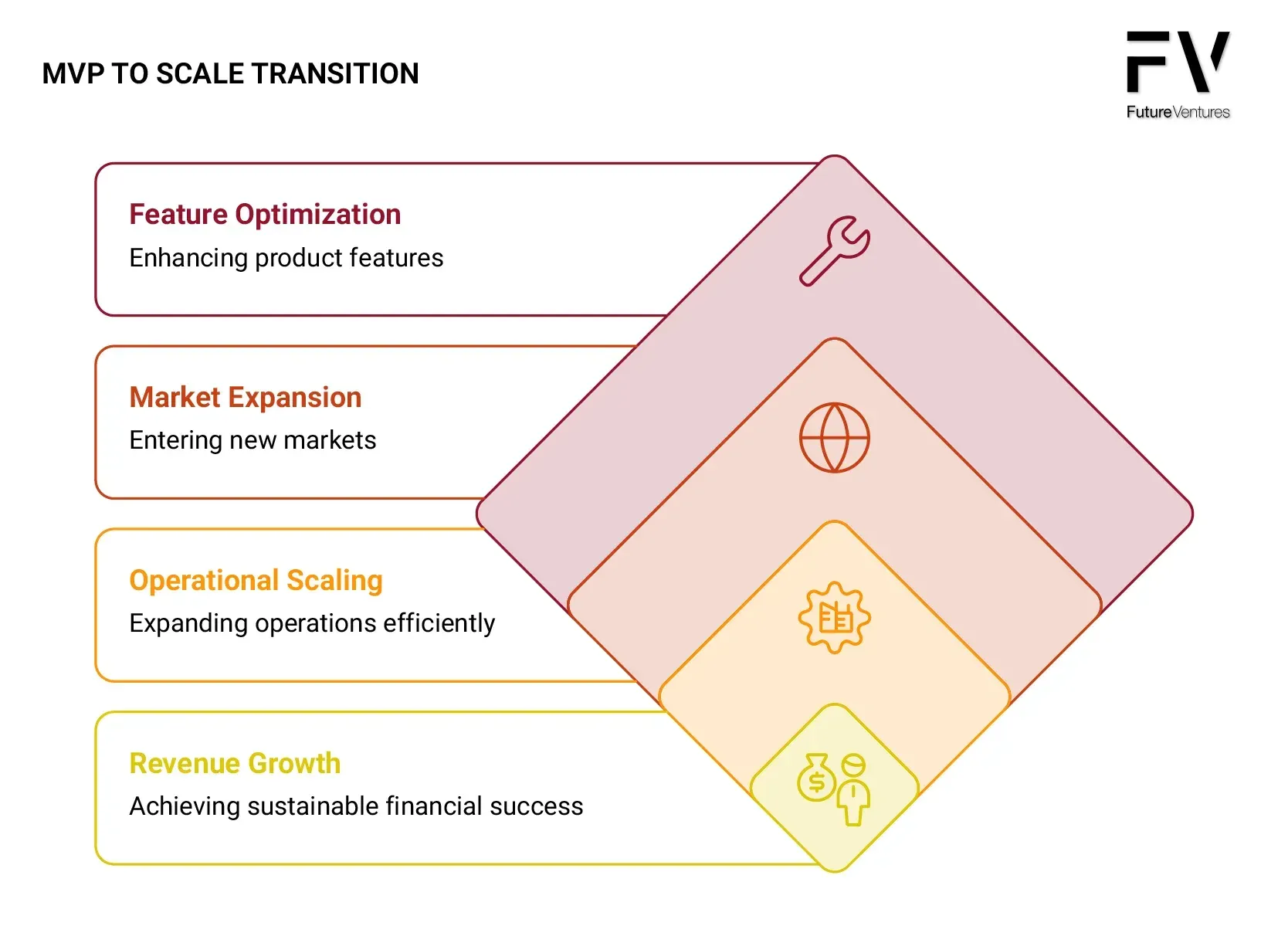
Objective:
The objective of this step is to transition from a Minimum Viable Product (MVP) to a scalable product that can meet the demands of a larger market. This involves refining the product based on feedback from early adopters and preparing it for wider distribution.
Key Activities:
- Scale Product Development: Enhance the MVP by incorporating feedback from early adopters, ensuring the product meets the expectations of a broader audience. This may involve adding new features, improving existing ones, or optimizing performance.
- Market Expansion: Identify new customer segments and markets to target. This could involve geographical expansion or targeting different industries that can benefit from the product.
- Channel Optimization: Evaluate and optimize distribution channels to ensure efficient delivery of the product to the target customers. This might include partnerships with distributors, enhancing online sales platforms, or exploring new sales channels.
- Operational Scaling: Prepare the operational aspects of the business to handle increased production and distribution. This includes scaling manufacturing processes, logistics, customer support, and other operational functions.
- Team Expansion: Assess the need for additional team members to support the scaling process. This could involve hiring new staff in areas such as sales, marketing, product development, and customer support.
- Performance Metrics: Establish key performance indicators (KPIs) to measure the success of scaling efforts. These metrics should focus on areas such as customer acquisition, retention, revenue growth, and product performance.
- Risk Management: Identify potential risks associated with scaling and develop strategies to mitigate them. This includes financial risks, operational challenges, and market competition.
Outcomes:
- Increased Market Share: Successfully scaling the product should result in a larger market share and increased brand recognition.
- Revenue Growth: As the product reaches more customers, revenue should increase proportionally.
- Enhanced Product Offering: The product should be more robust and feature-rich, meeting the diverse needs of a larger customer base.
- Strong Competitive Position: Scaling effectively can position the company as a leader in the market, providing a competitive edge over rivals.
By following these steps, companies can effectively transition from an MVP to a fully scalable product, ensuring long-term success and sustainability in the market.
Refer to the Go-To-Market (GTM) Plan by target customer and by channel.
Final Thoughts
The Customer Discovery process, including customer discovery interviews, is essential for all types of companies, whether a startup or one that is developing a product. This process will not only allow you to better understand your target audience but will also help you to know if your product can meet the needs of your customers.
Proceeding to a solution without validating the need is like building a house without first pouring the foundation. Confirm that the problem is worth solving. If the pain your customers feel is not big enough, they will not seek a solution. Make sure that you are investing your time and money in an attractive market/opportunity that has a catalyst, a burning need and a market big enough to support your entry. Fully understand the buying process, adoption barriers, and all of the reasons why your customers could say no. If you have a way to overcome those NOs, proceed with caution. Calculate the ROI of this opportunity and rank it against other opportunities presented to you. If it bubbles up to the top, then pursue it; if it does not, then set it aside. Based on the competitive research, determine if you could become the #1 or the #2 player in the market. If you can, then proceed; if you can’t, then set aside.
Author's Bio
Maxim Atanassov is a strategic advisor, transformation leader, and investor with over 20 years of experience scaling businesses across sectors. Based in Calgary, Maxim blends deep financial insight with emerging technologies to unlock growth, manage risk, and build future-ready organizations.
As a serial entrepreneur and tech founder, Maxim has led complex transformations that turn vision into execution—helping companies modernize operations, architect new capabilities, and outperform their industries. His approach fuses AI integration with strategic governance, enabling clients to capitalize on disruption and scale with confidence.
At Future Ventures, Maxim partners with founders, executives, and investors to drive bold change—offering hands-on guidance from idea to impact. Known for his clarity in strategy design and ability to operationalize innovation, he plays a pivotal role in shaping the ventures and ventures-to-be that define tomorrow.
Share

